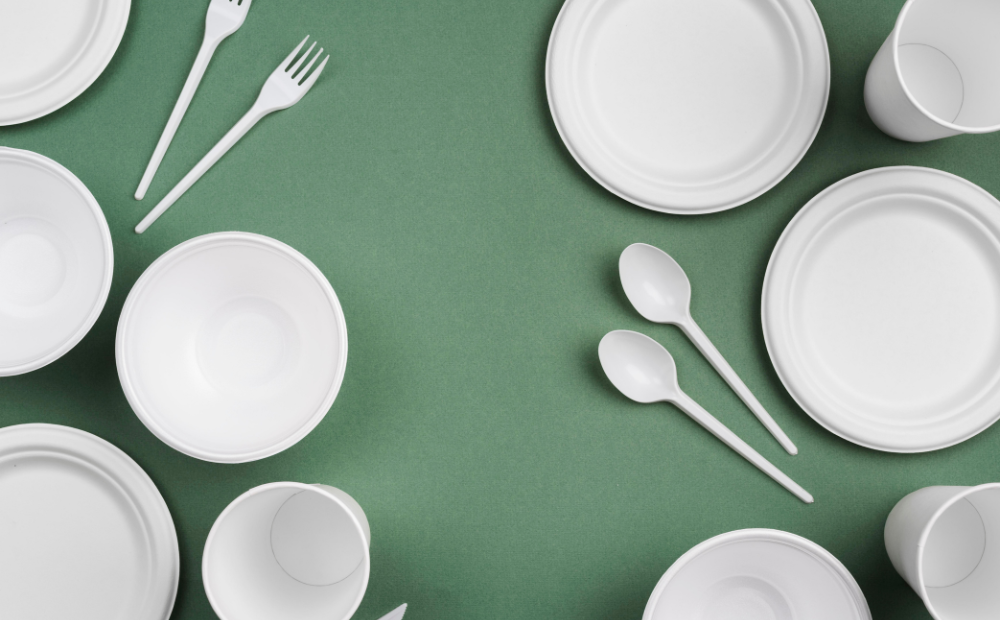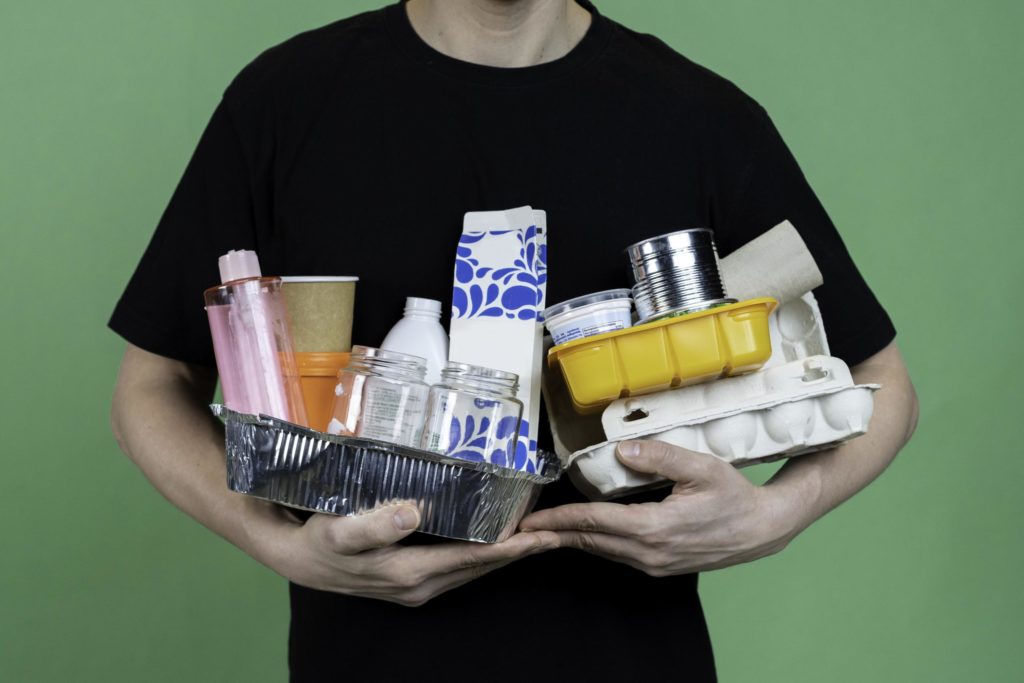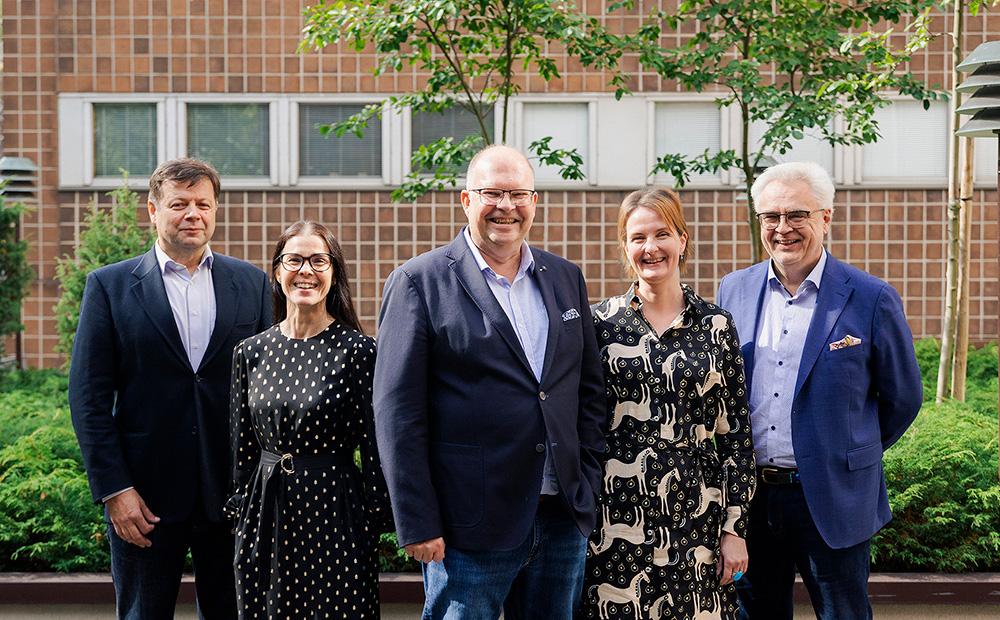SUP Directive: Frequently asked questions
The Single-Use Plastic Directive SUPD introduces new responsibilities and costs to companies with producer responsibility. This information package explains the background to the Directive and the progress of implementation in Finland. This article is constantly updated.
What is the SUPD?
The Single‑Use Plastic Directive aims to reduce the impact of certain plastic products on the environment (2019/904/EU).
What measures does the Directive require? Depending on product group, consumption reduction measures, product bans, marking requirements, requirements related to product characteristics as well as the so-called extended producer responsibility i.e. the requirement to cover costs of littering in certain public areas and awareness-raising measures.
What are the objectives of the Directive?
The aim is to reduce litter in the environment, especially in maritime areas, to promote circular economy and to harmonise product regulation in the EU internal market. The original purpose of the SUPD was to address the global problem of plastic litter in the seas by targeting certain plastic products most found on beaches, but it has expanded to cover single-use products in general.
Which products belong to the scope of the SUPD
The following products belong to the scope of the Directive
- certain single-use plastic products
- all plastic products made from oxo-degradable plastic
- all fishing gear containing plastic
The product groups are listed in the annex of the Directive. Individual product examples are listed in paragraph 12 in the preamble of the Directive. Additional instructions related to definitions can be found in the Commission guidelines.
What types of packaging are considered single-use plastic products that belong to the scope of the SUPD?
SUP packaging is certain single-use plastic containing ready-to-eat food packaging, certain beverage packaging and cups for beverages with their caps and lids as well as plastic bags offered to consumers at the point of sales.
A list of product examples with SUP product classification is published on the RINKI website.
There are still open questions related to the definition of SUP products and clarification is sought in cooperation with the authorities.
How does the SUPD define plastic?
According to Article 3 of the SUPD: plastic is a material consisting of a polymer defined in the REACH Regulation, to which additives or other substances may have been added and which can function as a main structural component of final products, with the exception of natural polymers that have not been chemically modified.
Further information is provided on the webpage of The Finnish Safety and Chemicals Agency (TUKES).
Which products are banned under the SUPD?
The Directive prohibits placing on the market of the following single-use plastic products:
- Cotton bud sticks, cutlery, plates, straws, beverage stirrers, balloon sticks, food containers made of expanded polystyrene (used to contain food intended for immediate consumption and which is typically consumed from the receptacle and is ready to be consumed without any further preparation), beverage containers made of expanded polystyrene (including their caps and lids), and cups for beverages made of expanded polystyrene, including their covers and lids. Straws and cotton bud sticks that fall within the scope of the Directives on Medical Devices are not covered by the SUP Directive.
2. All products made from oxo-degradable plastic.
The product bans entered into force 23.8.2021. The product bans were implemented with a national decree on certain plastic products.
What do the marking requirements mean?
Certain plastic products must include a marking indicating that the product contains plastic. The marking consists of an image (turtle symbol) and an information text under the image. The text must be written in all official languages of the Member State, i.e. in Finnish and Swedish in Finland.
Each product group has its own marking with which products (cups for beverages) and packaging (tobacco products with filters, filters used with tobacco products, wet wipes and sanitary towels and tampons) must be marked. Detailed instructions on marking requirements can be found in the Implementing Regulation.
The Implementing Regulation erroneously states that the sticker for cups for beverages can be placed on the cups’ packaging, but it must be placed on the cup itself. Stickers have been allowed on products which were put on the market before 4.7.2022.
Where can the marking pictograms be found?
The pictograms can be found on the Commission’s website in the languages of all Member States.
Which products will be subject to the marking requirements?
The markings must be affixed to the following products and packaging:
- All single-use cups for beverages that are made wholly or partly from plastic (the marking must be printed or engraved on the cup itself).
- Packets and cartons for tobacco products with filters. Sales and group packaging for filters marketed for use in combination with tobacco products.
- Wet wipes (pre-wetted personal care and domestic wipes) in sales and grouped packaging.
- Sales and group packaging for tampons and sanitary towels (packaging with a surface area of more than 10 cm2)
The marking requirements concern products placed on the market in Finland from 23.8.2021 onwards. The national implementation of the SUPD is delayed in Finland and therefore the entry into force deviates from the timetable set in the SUPD. The marking requirements were implemented with a national decree on certain plastic products.
Is it allowed to sell out the banned or unmarked products?
Products that have been placed on the market in Finland before 23.8.2021 may be sold out/used up. No deadline has been set for selling the products in stock.
Placing on the market means the first making available of a product on the Finnish market. Making available on the market means the supply of a product for distribution, consumption or use on the Finnish market in the course of a commercial activity.
For example commercial operators in Finland may sell from their warehouse or shop single-use plastic products that have been purchased before 23.8.2021 (ownership of product has been transferred), the sales of which is either banned by the Directive or they lack the turtle marking obligatory from 23.8.2021 onwards. There is no deadline for sales.
Additional information can be found on the webpage of the Finnish Safety and Chemicals Agency (Tukes).
Authorities in Finland will carry out the first SUPD related surveillance project on product bans and marking requirements in autumn 2022.
What are the costs of the SUPD?
The costs vary by product group. In addition to direct product bans and reduction in sales, costs will incur from product marking requirements, the so called “extended producer responsibility” (See below: What does “extended producer responsibility mean”?) which refers to the requirement to also bear the costs of littering in certain public areas, as well as product requirements, such as the requirement for the plastic cap to remain attached to the beverage packaging.
Is cross-border distance sales included in the requirements of the SUPD? Yes. The SUP requirements (marking, product requirements, etc.) also apply to products that end up in Finland through cross-border distance sales. Distance sales to users in Finland from abroad was included in the scope of producer responsibility in July 2021. The SUPD’s so called extended producer responsibility (cleaning up litter in public areas) also concerns distance sales. Foreign distance sellers can fulfil their producer responsibility obligations in Finland by joining a producer organisation or by appointing an authorised representative to fulfil the obligations. If a distance seller sells SUP products to users in Finland, they are obliged to appoint an authorised representative located in Finland.
What is meant by national consumption reduction? The Directive obliges Member States to take the necessary measures to achieve “an ambitious and sustained” reduction in the consumption of single-use plastic products (Part A of the Annex to the Directive). Those measures must achieve a measurable quantitative reduction in consumption by 2026 compared to 2022.
What is meant by “necessary measures” to reduce consumption? The measures may include national consumption reduction targets, offering re-usable alternatives to single-use plastic products, economic instruments (e.g. not offering single-use plastic products to consumers free of charge) and agreements for this purpose. The measures may vary depending on the environmental impact of the products in question during their life cycle, also when they end up in the environment as litter. All measures must be proportionate and non-discriminatory.
Each Member State decides on its measures. In March 2022 the Ministry of the Environment, Finnish Food and Drink Industries Federation, Finnish Hospitality Association MaRa, Finnish Grocery Trade Association and Finnish Packaging Association published a voluntary Green Deal agreement to reduce the consumption of single use plastic drinking cups and certain food packaging. Further information here.
Does the SUPD affect packaging data reporting to RINKI?
Yes. The SUPD increases the reporting obligations of producers when data on SUP products put on the market per SUP product group are needed for monitoring the SUP requirements. The separate SUP packaging reporting as part of the regular packaging data reporting begins in 2024 when packaging data 2023 is reported.
What does “extended producer responsibility” in the SUPD mean?
Extended producer responsibility means that the producer of SUP packaging must pay for certain costs that are the responsibility of municipalities. These are costs related to SUP litter cleaning, collection, transport and handling as well as awareness raising measures required by the SUPD to reduce litter and increase reuse.
Producers of SUP packaging will bear the cost from the beginning of 2023. The 2023 costs are covered by an SUP fee which is invoiced from the companies in 2024.
Which authority controls the implementation of the SUPD obligations in Finland?
Product bans and product markings: Finnish Chemicals and Safety Agency TUKES
Senior Officer, Kati Suomalainen, kati.suomalainen@tukes.fi tel.+358 29 5052 124
Senior Officer, Tiia Salamäki, tiia.salamaki@tukes.fi tel. +358 29 5052 632
Producer responsibility: Pirkanmaa ELY-centre (Pirkanmaa Centre for Economic Development, Transport and the Environment)
Senior Officer Tuomo Aunola, tuomo.aunola@ely-keskus.fi tel. +358 29 5036 319
The Ministry of the Environment prepares the implementation of the SUPD in Finland
Senior Specialist, Jussi Kauppila jussi.kauppila@gov.fi tel. +358 29 5250 085
The Finnish Chemicals Safety Agency Tukes is planned to monitor the requirements on caps to remain attached to the beverage container.
The Pirkanmaa ELY centre is planned to monitor other requirements of the Direcitve.
Where do I find more information on the SUPD?
- Ministry of the Environment webpage (in Finnish)
- The Finnish Chemicals and Safety Agency TUKES
- European Commission webpage: Single-use plastics (europa.eu)
The article is based on information available in 2022. There are still open questions related to the implementation of the SUPD. RINKI cooperates closely with the authorities on these questions. We update this article.
Updates:
24.10.2023: Article has been updated
31.10.2022: Article has been updated
14.9.2021: Article has been updated
23.8.2021 Product bans and marking requitements entered into force in Finland
2.7.2021: The implementation of the SUPD is delayed in Finland. According to information available in the end of June the national decree would enter into force in mid-August instead of 3.7.2021.



